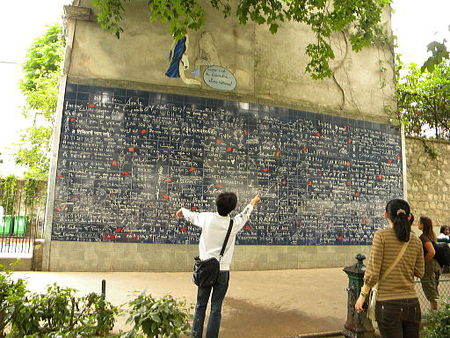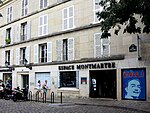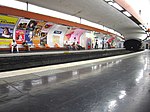Wall of Love
2000 establishments in France2000s muralsBuildings and structures completed in 2000Buildings and structures in the 18th arrondissement of ParisLove ... and 4 more
MontmartrePaintings of MontmartreTourist attractions in ParisWalls

The Wall of Love (French: Le mur des je t'aime, lit. the I Love You Wall) is a love-themed wall of 40 square metres (430 sq ft) in the Jehan Rictus garden square in Montmartre, Paris, France. The wall was created in 2000 by calligraphist Fédéric Baron and mural artist Claire Kito and is composed of 612 tiles of enamelled lava, on which the phrase 'I love you' is featured 311 times in 250 languages. Each tile is 21 by 29.7 centimetres (8.3 in × 11.7 in).The wall includes the words 'I love you' in all major languages, but also in rarer ones like Navajo, Inuit, Bambara and Esperanto. The wall is open to the public free of charge.
Excerpt from the Wikipedia article Wall of Love (License: CC BY-SA 3.0, Authors, Images).Wall of Love
Place des Abbesses, Paris Quartier de Clignancourt (Paris)
Geographical coordinates (GPS) Address Nearby Places Show on map
Geographical coordinates (GPS)
| Latitude | Longitude |
|---|---|
| N 48.884625 ° | E 2.3384305555556 ° |
Address
Le Petit Montmartre
Place des Abbesses
75018 Paris, Quartier de Clignancourt (Paris)
Ile-de-France, France
Open on Google Maps










